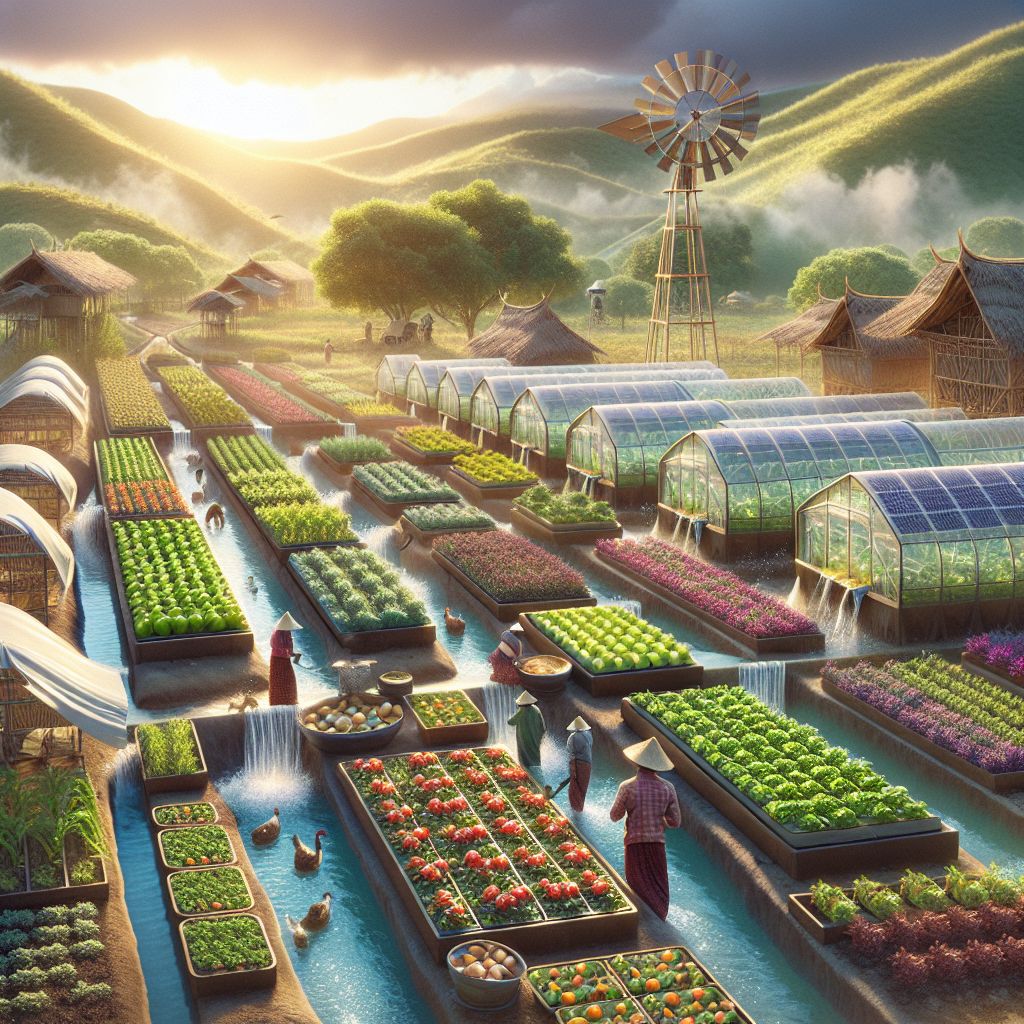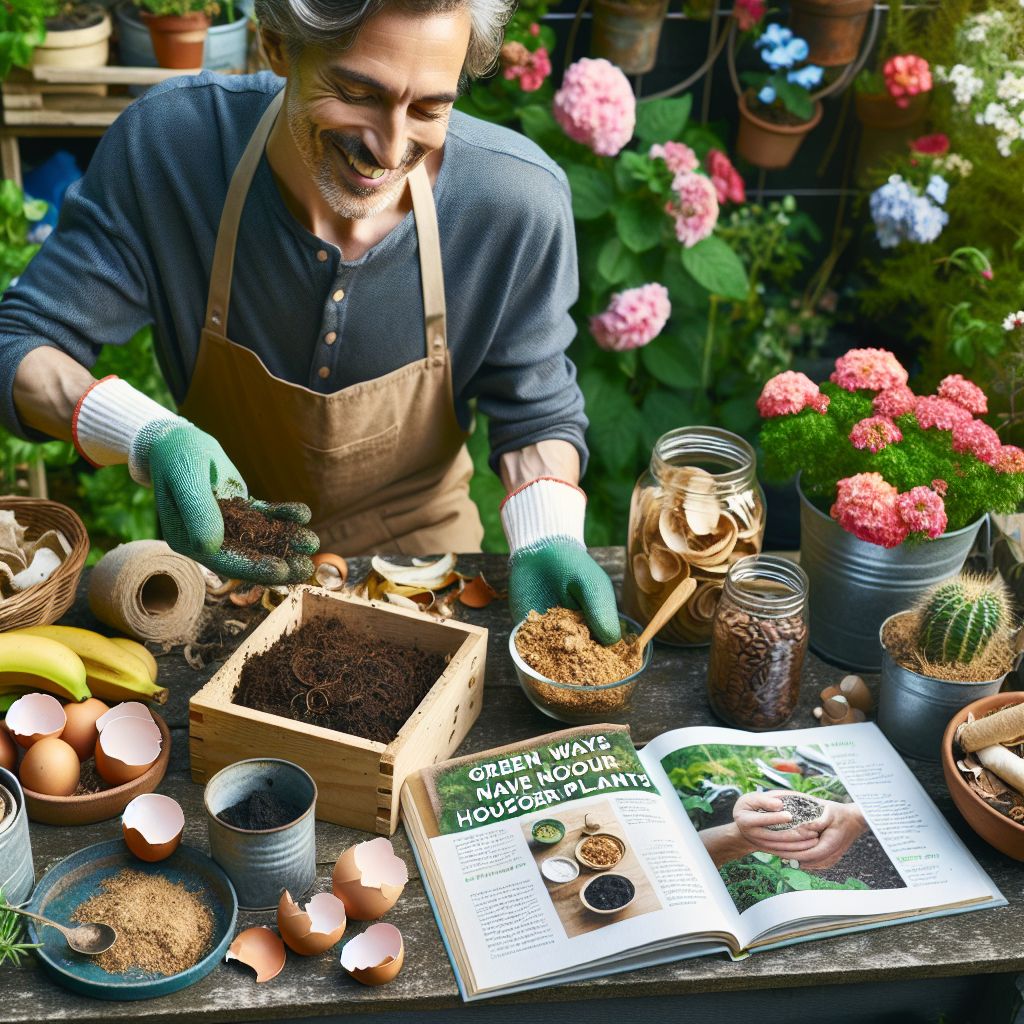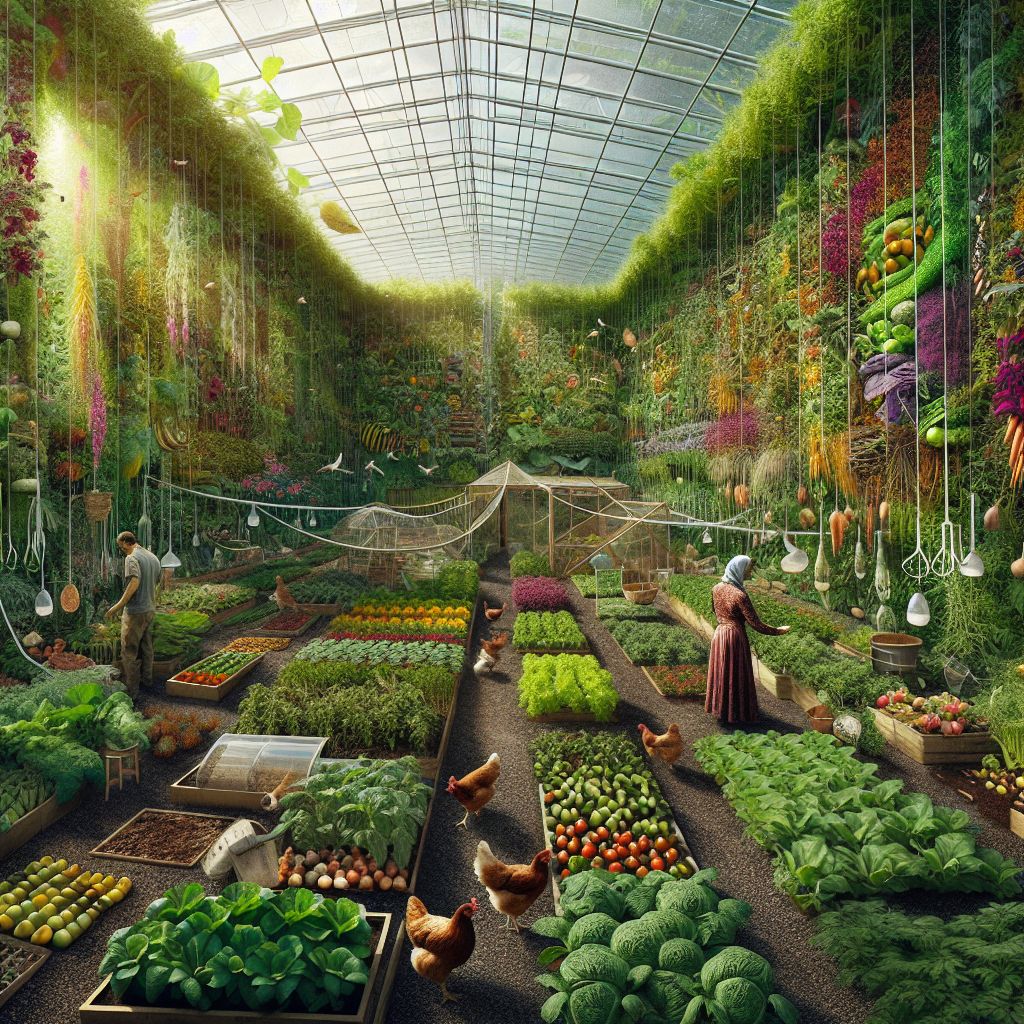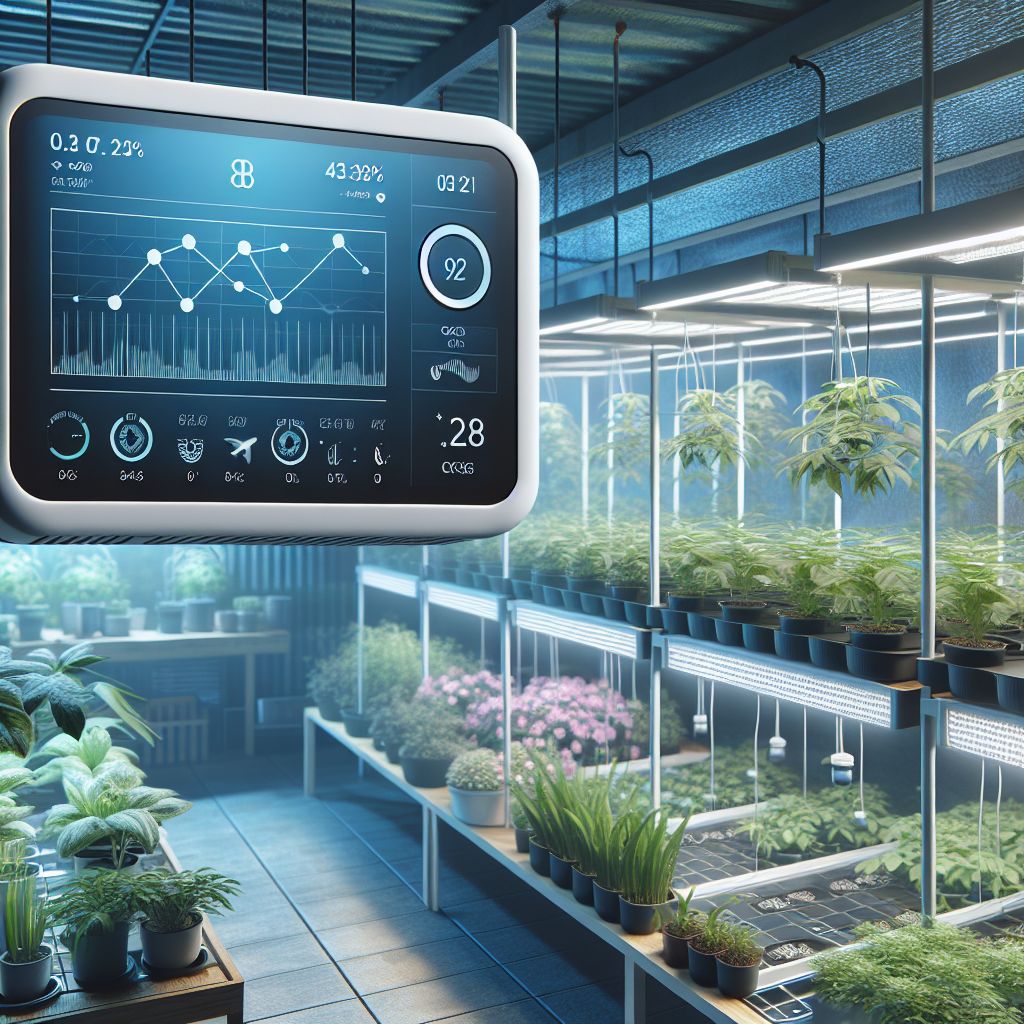Key Takeaways
- Urban rooftop farming can turn barren cityscapes into lush, green spaces that provide fresh food and improve air quality.
- Essential materials for rooftop farming include lightweight soil, containers, and appropriate plants that suit the local climate.
- Benefits of rooftop farming include the reduction of the urban heat island effect, increased biodiversity, and community engagement.
- Challenges faced by rooftop farmers range from ensuring structural safety to managing water usage and navigating weather conditions.
- By adopting sustainable practices like rainwater harvesting and composting, rooftop farms can become eco-friendly havens in urban environments.
Perks of Planting on Your Rooftop
Imagine stepping outside to a rooftop garden where tomatoes and herbs flourish in the sunshine above a bustling city street. This is the promise of urban rooftop farming, a practice that is not just a trend, but a sustainable shift in urban living. Let’s dive into the economical, ecological, and communal benefits of cultivating your own rooftop oasis.
Economical: Save Green While Growing Greens
Who doesn’t love the idea of shaving a few bucks off the grocery bill? By growing your own produce, you’re creating a source of food that’s as fresh as it gets, and it doesn’t need to travel miles to reach your plate. This means less spending on transportation and packaging, and more savings for you. Plus, in some areas, there may be grants or incentives available for green initiatives like rooftop gardens.
Eco-Friendly: Reducing Your Carbon Footprint
Urban rooftop farming is a practice that can significantly reduce your carbon footprint by minimizing the distance food travels from farm to table and by repurposing underutilized urban spaces.
Rooftop farming isn’t just about fresh produce, it’s about making a positive impact on the environment. These green spaces can significantly reduce the urban heat island effect, where concrete and asphalt trap heat, by providing shade and removing heat from the air through evapotranspiration. This means cooler buildings and less need for air conditioning, slashing energy consumption and greenhouse gas emissions.
Community: Cultivating Common Ground
Urban agriculture initiatives can bring communities together, creating spaces where individuals can collaborate and connect. One innovative approach to community building is rooftop farming, which not only utilizes underused urban spaces but also fosters a sense of shared responsibility and engagement among local residents.

Beyond the lettuce and the tomatoes, rooftop farms can grow something just as vital: community. They can be gathering places for neighbors to connect, share tips, and swap produce. They can also provide educational opportunities for local schools and organizations, fostering a sense of stewardship for the environment among young and old.
Hurdles on the Horizon for Rooftop Farmers
Before you start hauling soil and seedlings to your roof, it’s crucial to be aware of some of the challenges you may face. The path to a fruitful rooftop garden is paved with considerations of weight, wind, and water.
Structural Integrity: The Weight of the Matter
When considering urban rooftop farming techniques, it’s crucial to evaluate the structural integrity of the building. The additional weight of soil, plants, and equipment requires a thorough assessment to ensure safety and compliance with building codes.
First things first, can your roof handle the weight of your garden dreams? You need to check the load-bearing capacity of your rooftop to ensure it can support the weight of soil, containers, and plants, especially when wet. Consulting with an engineer might be necessary to prevent any structural issues.
Choosing Crops Wisely: Not Everything Loves Heights
Not all plants are cut out for life in the sky. When selecting crops for your rooftop, consider factors like wind exposure and the amount of sunlight your roof receives. Hardy plants that can withstand a bit of breeze and varying temperatures are your best bet.
Weather Woes: Battling the Elements
Your rooftop garden will be at the mercy of the elements, so plan accordingly. Ensure proper drainage to avoid waterlogging your plants during heavy rains, and think about installing windbreaks if your area is prone to gusty conditions.

“Drainage for Green Roofs …” from greenroofs.org
Rooftop Revolution: How to Grow Upwards in the City
With the right approach, your rooftop can transform from a barren wasteland into a verdant garden. It’s about more than just aesthetics, it’s about reimagining urban spaces for the betterment of the environment and our communities.
Green Spaces in the Sky
Creating a green space in an urban setting is like giving the city a breath of fresh air. It’s about bringing life to unused spaces and, in turn, bringing more oxygen to our neighborhoods. Plants absorb carbon dioxide and release oxygen, making rooftop gardens not just food sources but also air purifiers.
A Closer Look at Urban Oasis
Think of your rooftop as an empty canvas, waiting to be painted with the greens and colors of various plants. But before you start, it’s essential to understand what rooftop farming is, why it’s beneficial, and how you can create a thriving garden in the sky.
Urban rooftop farming is a practice that has gained popularity in cities around the world as a way to make use of underutilized space and contribute to local food production. The benefits of rooftop farming are numerous, including reducing the urban heat island effect, providing local residents with fresh produce, and creating green spaces that contribute to the biodiversity of the city.
However, there are also disadvantages to consider such as the initial setup costs, structural weight limitations of buildings, and the need for constant maintenance. For those interested in implementing these techniques, it’s important to consider the materials and structural requirements for a successful rooftop garden.
Understanding Urban Rooftop Farming
Urban rooftop farming is the practice of cultivating plants on the roofs of buildings. This innovative form of agriculture turns underutilized spaces into productive areas that can grow vegetables, fruits, herbs, and even flowers. It’s a step towards self-sufficiency and sustainability, making the most of available space in densely populated urban areas.
But why would anyone choose to farm on a roof? The reasons are compelling. For one, it can reduce the distance food travels from farm to plate, ensuring fresher produce. Moreover, it can contribute to the local economy by creating jobs and potentially reducing grocery costs. Most importantly, rooftop farming can make a dent in the urban heat island effect and contribute to cleaner air.
Example: In cities like New York and Tokyo, where ground space is at a premium, rooftop farms have become community hubs, providing fresh produce to local restaurants and residents while also offering educational programs and events.

Now, let’s explore the various techniques that can turn a barren rooftop into a lush garden.
What is Rooftop Farming?
Rooftop farming is an innovative agricultural technique that transforms roof spaces into productive green gardens. It’s a subset of urban agriculture that focuses on growing plants and vegetables in the unused spaces atop buildings, providing a fresh supply of produce in urban areas.
Rooftop farming is about more than just throwing some pots on a roof and calling it a day. It’s a deliberate and thoughtful process that involves selecting the right plants, materials, and farming methods to create a sustainable ecosystem high above the ground.
Why Choose to Farm on a Roof?
Choosing to farm on a roof isn’t just a whimsical idea—it’s a strategic move. Rooftop farming can combat urban sprawl, increase green space, and improve biodiversity. It’s an innovative solution to food deserts, areas where access to fresh, healthy food is limited. Plus, it provides an escape from the concrete jungle, creating a peaceful haven for city dwellers.
But let’s get practical. How do you actually set up a rooftop farm? Here are the basics: For more in-depth guidance, consider reading our rooftop farming startup guide to help you get started.
- Assess the space: Measure your available area and check the structural integrity of your roof.
- Choose your method: Decide between container gardening, hydroponics, aeroponics, or a green roof.
- Select your materials: Get the right soil, containers, and tools for the job.
- Pick your plants: Choose crops that will thrive in your specific rooftop conditions.
- Plan for water: Set up an irrigation system that’s efficient and sustainable.
The A-Z of Rooftop Farming Methods
There’s no one-size-fits-all when it comes to rooftop farming methods. Each approach has its unique set of benefits and requirements. Let’s break them down:
Container Gardening: Simplicity at Its Best
Container gardening is exactly what it sounds like—growing plants in containers. This method is versatile and accessible, making it a great starting point for budding rooftop farmers. You can use anything from traditional pots to recycled containers, as long as they provide adequate drainage.

“Rooftop Farm with Plant Containers …” from www.olizgarden.com
Hydroponics: Water Wise and Space Savvy
Hydroponics is a soil-less farming method where plants grow in nutrient-rich water. This technique can be more water-efficient than traditional farming and is perfect for roofs that can’t handle heavy loads. Plus, it often results in faster plant growth and higher yields.
When setting up a hydroponic system, consider these steps:
- Choose the right system: From simple wick systems to more complex nutrient film techniques, there’s a variety to pick from.
- Get the gear: You’ll need a water reservoir, pumps, and proper lighting if you don’t have enough natural sunlight.
- Mix your nutrients: Plants need the right balance of nutrients to thrive in water.
Aeroponics: The Future of Urban Farming
Aeroponics takes hydroponics one step further by suspending plants in air and misting their roots with nutrient solution. This high-tech method uses even less water than hydroponics and can produce remarkable yields. However, it requires a bit more technical know-how and initial investment.
Green Roofing: Enabling Biodiversity Above
Green roofing involves covering your roof with a layer of vegetation. This method is excellent for insulation, reducing runoff, and creating habitats for wildlife. While it can be heavier than other methods, it’s a fantastic way to turn your roof into a mini ecosystem.

“About Green Roofs — Green Roofs …” from greenroofs.org
Remember, each method has its pros and cons. Container gardening is easy to start but can require more maintenance. Hydroponics is efficient but needs constant monitoring. Aeroponics offers incredible results but can be complex to set up. Green roofing is environmentally beneficial but requires a sturdy structure.
Whatever method you choose, the key is to start small, learn as you go, and enjoy the process of creating a greener, healthier urban environment.
Choosing Containers and Planters
Containers are the heart of any rooftop garden, especially if you’re starting with container gardening. When choosing containers, look for lightweight materials like fiberglass, plastic, or fabric pots. Make sure they have holes for drainage to prevent waterlogged roots. Here’s how to pick the perfect pot:
- Size matters: Larger containers hold more soil and retain moisture longer, but they’re also heavier.
- Material magic: Opt for materials that suit your climate. Dark containers absorb heat, which might not be ideal in hot areas.
- Drainage is key: Ensure your containers allow excess water to escape to prevent root rot.
Setting Up Your Hydroponic System
Hydroponic systems can be a game-changer for your rooftop farm. They require some setup, but once you’re up and running, they’re incredibly efficient. Here’s a quick guide to getting started:
- Choose a location on your rooftop that gets plenty of sunlight or set up grow lights if needed.
- Pick a hydroponic system that fits your space and budget. There are many DIY options available.
- Invest in a quality water pump and timer to keep your plants fed and oxygenated.
- Monitor your plants and nutrient levels regularly to ensure optimal growth.
Selecting Soil and Substrates
Soil selection is crucial for green roofing and container gardening. You want a mix that’s lightweight yet rich in nutrients. Many rooftop gardeners use a blend of perlite, vermiculite, and peat moss. These materials provide good drainage and aeration, which are essential for healthy rooftop plants.
Frequently Asked Questions
Is rooftop farming sustainable long-term?
Rooftop farming has the potential to be a sustainable practice, especially with careful planning and management. Incorporating systems like rainwater harvesting and solar power can further enhance sustainability. However, long-term success also depends on regular maintenance, community support, and adapting to changing conditions.
Example: The Brooklyn Grange in New York City operates one of the world’s largest rooftop soil farms, spanning 2.5 acres across two roofs, and has been sustainably producing vegetables, herbs, and honey for over a decade.
Can I grow a rooftop garden without any prior farming experience?
Absolutely! Rooftop gardening can be a rewarding experience for beginners. Start small with easy-to-grow plants and take advantage of the many resources available online and in your community. Don’t be afraid to ask for advice from local gardening groups or nurseries. Everyone starts somewhere, and learning by doing is part of the fun.
How does rooftop farming contribute to urban greening?
Rooftop farming is a vital component of urban greening, providing patches of vegetation that contribute to biodiversity, reduce the urban heat island effect, and improve air quality. Green roofs also manage stormwater runoff, which is crucial in preventing urban flooding.





